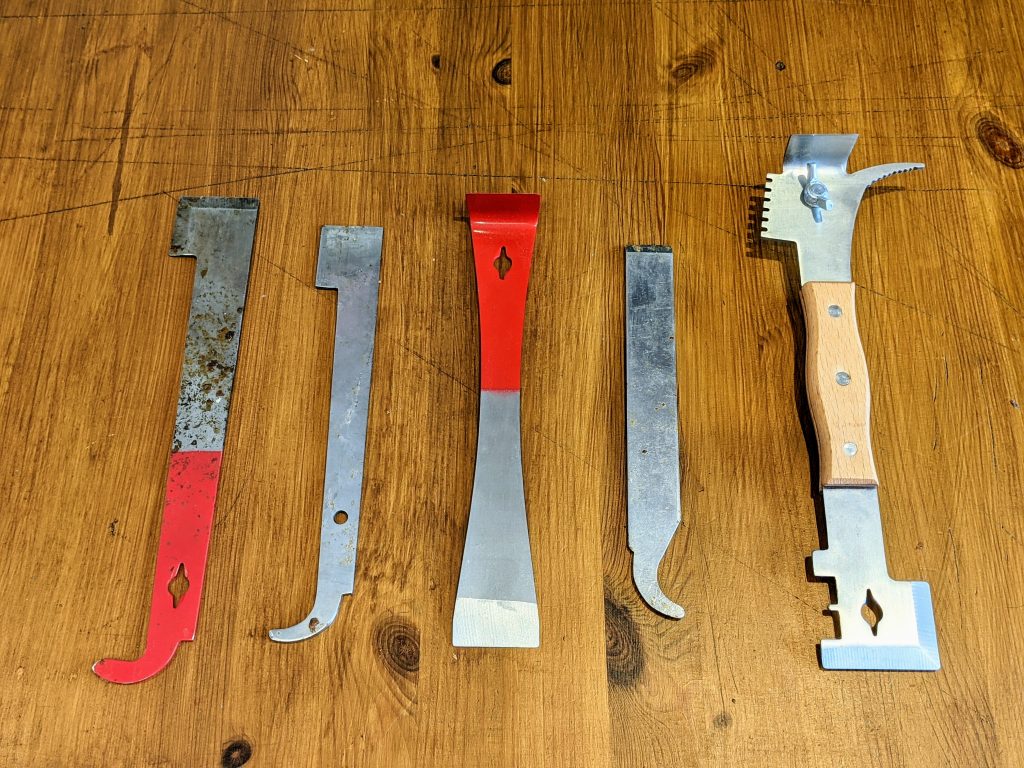Having to start somewhere I thought I’d begin with a series of posts on the essential equipment required to get started in beekeeping and there isn’t much simpler or more broadly useful in the beekeeper’s arsenal than the ubiquitous ‘hive tool’.
Prying and scraping
All honey bees have a habit of gluing any small cracks in their home together with propolis, a mixture of saliva and sap that manages to be both extremely sticky and simultaneously rock hard. Brood boxes and supers will be attached to each other in short notice and individual frames will quickly become a single mass.

Over time any larger gaps can (and will) be filled with wax comb too. All this means that completing any kind of inspection or manipulation, without a hive tool to seperate and clean components can be ‘difficult’, so get used to having one in your hand at all times and into the habit of keeping carry a spare in a pocket or your toolbox.
Fortunately (especially because, if you’re anything like me, you’ll loose and re-discover at least two per season) hive tools are affordable (roughly £5 to £15) and easy to source. In a pinch a screwdriver, table knife or old chisel might do but chances are you’ll end up damaging your hives (or yourself!).
The primary usage of the hive tool being to seperate stuck together boxes and frames, almost all follow a standard pattern to reflect this – one end is for levering apart boxes and the other for lifting/seperating frames. Beyond that there are plenty of styles of hive tool to pick from, some are minor variations on the theme and some with so many additional features they are the Swiss-Army Knife of tools.
Which one is ‘best’?
Which hive tool is best is largely subjective, if you have one already its probably that one, otherwise whatever suits you is really down to personal taste: how comfortable it feels in your hand, how easy you find it to hold and use. Ideally you will have been on a least a couple of inspections with your local association or mentor and had the oppotunity to try a couple out to find your preference. Fortunately (for the purposes of this article at least) I made the mistake of misplacing my primary tool just before Christmas this year and recieved several replacements as gifts (before re-discovering my old-faithful stuffed into a welly boot).

From left-to-right above we can see:
- A ‘J’ or ‘hook’ type (well used and covered in propolis, this really needs cleaning properly, my bad – I’ll cover that later in this article!).
- A smaller version of the same.
- A ‘standard’ hive tool.
- A very small ‘straight chisel’ ended, J-type.
- A monsterous multi-functional, everything to all people beast!
The leftmost design J-type tool is my preferred option (as clearly visible), the chisel end (at the top in this picture) can be used to pry boxes apart and lever frames loose, while the hooked end